Midge pupa, grubs & snails
{{start}}
Midge pupa and grub type flies can be fished in a number of ways however most hits seem to either be on the dead drift or on the lift. Also remember that if you are fishing to fish actively feeding on midges or midge type naturals speed and accuracy of casting is essential. Grubs on the other hand should be fished dead drift with no drag.
{{end}}
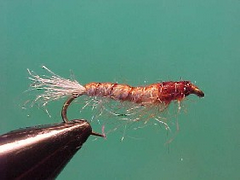
{{+1}}Free swimming caddis{{-1}}
{{start}}
The third group are the free swimming caddis grubs. These caddis grubs move amongst the detritus matter and the rocks foraging for food and partners and of course drift in the current assuming the fetal position or free swim in the current as they migrate down stream.{{end}}

{{+1}}Czech nymphs{{-1}}
{{start}}
The uncased caddis have quite a few similarities. They often adopt a curved fetal position and when they are free swimming they are more elongated still with a curved back but with a lifted head. The have short tail like filaments, have bodies of around seven or eight segments that may have abdominal gills at each segment, have darker heads with two or three segments and have 3 or more sets of legs below the head or toward the front of the grub.{{end}}

{{+1}}Woolly worm{{-1}}
{{start}}
This is an old pattern and whilst it can be dressed in many different ways I prefer it dressed as described below which is similar to the original form with the exception of the tail which I prefer to be much finer than the original. I guess that makes it like a small Woolly Bugger. This fly works well in streams when fished across and down and is also a useful fly when fish are in still water mooching amongst flotsam & jetsam.{{end}}
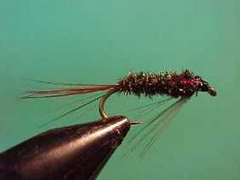
{{+1}}Diawl bach{{-1}}
{{start}}
I normally fish smaller sizes as a midge pupa and from time to time use larger sizes as a point fly in a team of wet flies on a floating or intermediate line. I tie it both with and without weight and find the addition of a small black tungsten bead makes it a handy anchor fly or a good prospecting fly in running water.{{end}}
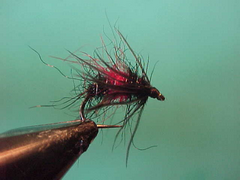
{{+1}}Bibio variant{{-1}}
{{start}}
Whilst the Bibio fly may have been originally designed as a blow fly representation it has found its place as a great top dropper fly in lakes where fish are midge feeders. That of course begs the question do fish take them as midges, or do they take them as some other insect more like a fly, but which spends part of its life cycle in the water, that just happens to hatch as the same time as a midge?{{end}}
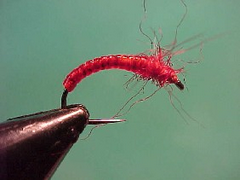
{{+1}}Jelly worm{{-1}}
{{start}}
This fly is a good represent of chironomids in their "blood worm" stage and it works well as an anchor fly in a team of two or three chironomids particularly when fished static early in the hatch.{{end}}
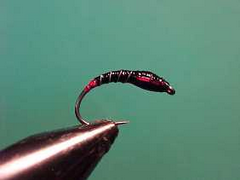
{{+1}}Black buzzer{{-1}}
{{start}}
When browns and rainbows are feeding on hatching midges at the exclusion of all else it pays to have a few buzzers in your kit. This pattern has proven itself to be readily accepted in many countries.{{end}}
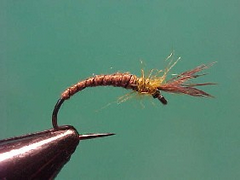
{{+1}}Chironomid{{-1}}
{{start}}
hilst trout do search out lava amongst the detritus matter and eat lava that have been disturbed by wind and wave action it is generally the free swimming pupae that are most often eaten by trout. Whilst the lava is generally found in the lower reaches the pupa can be found in a wide range of depths from very shallow to up to 10 meters.{{end}}
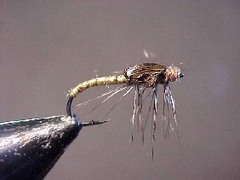
{{+1}}Rising midge{{-1}}
{{start}}
This fly is designed to be fished on the drop and then on the rise. It was originally designed to imitate the action of lake Jindabyne olive midges as they hatched but it has proven useful in other fisheries.{{end}}
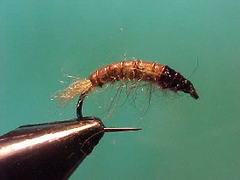
{{+1}}Foetal caddis grub{{-1}}
{{start}}
My preferred colours are light brown, light olive and hares ear each with slightly darker thoraxes and sand with a touch of orange or pink. All are tied with olive backs and heavily weighted so that they get down to where the fish are sitting.{{end}}













